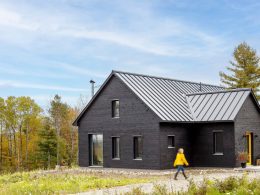In the ever-evolving landscape of urban development, a growing trend is taking hold – adaptive reuse of old real estate. This innovative approach to revitalizing aging structures is not only reshaping city skylines but also breathing new life into the very essence of these spaces.
Breaking Ground: The Adaptive Reuse Movement
Adaptive reuse involves repurposing existing buildings for a different function than originally intended. This trend is gaining momentum as developers, architects, and communities recognize the economic, environmental, and cultural benefits it brings.
Rescuing the Past, Building the Future
Old warehouses transformed into trendy lofts, disused factories becoming vibrant art studios, and historical landmarks repurposed into boutique hotels – these are just a few examples of the adaptive reuse movement at play. The allure lies not just in preserving the architectural heritage but also in creating sustainable spaces that cater to modern needs.
Economic Advantages and Community Impact
Economically, adaptive reuse makes sense. It often costs less to renovate an existing structure than to build from scratch. This financial prudence not only attracts developers but also allows for more affordable housing options, stimulating diverse communities.
Furthermore, adaptive reuse fosters a sense of community continuity. Preserving the familiar facade of a historic building while transforming its interior can bridge the gap between the old and the new, connecting generations and preserving a neighborhood’s identity.
Challenges and Controversies

However, the adaptive reuse trend is not without its challenges. Striking the right balance between preserving historical integrity and meeting modern standards can be a delicate process. Controversies arise when stakeholders disagree on how much change is acceptable, with some arguing for strict preservation and others pushing for more radical transformations.
Research Techniques and Ethical Considerations
As a journalist, it’s crucial to employ rigorous research techniques when reporting on adaptive reuse projects. This involves verifying the historical significance of the building, investigating the proposed changes, and gauging community sentiment.
Moreover, ethical considerations are paramount. Interviewing developers, architects, and community members provides a well-rounded perspective. It’s essential to remain unbiased, presenting both the positive and negative aspects of each project.
Conclusion: A Harmonious Blend of Past and Future
Adaptive reuse is not merely a passing trend but a thoughtful response to the challenges of urban development. By repurposing old structures, cities can preserve their history, reduce environmental impact, and create unique spaces that resonate with the community.
In the dynamic world of real estate, adaptive reuse stands out as a beacon of innovation, showing that progress need not come at the expense of the past. As these projects continue to reshape our urban landscapes, they serve as a testament to the harmonious coexistence of history and progress.












